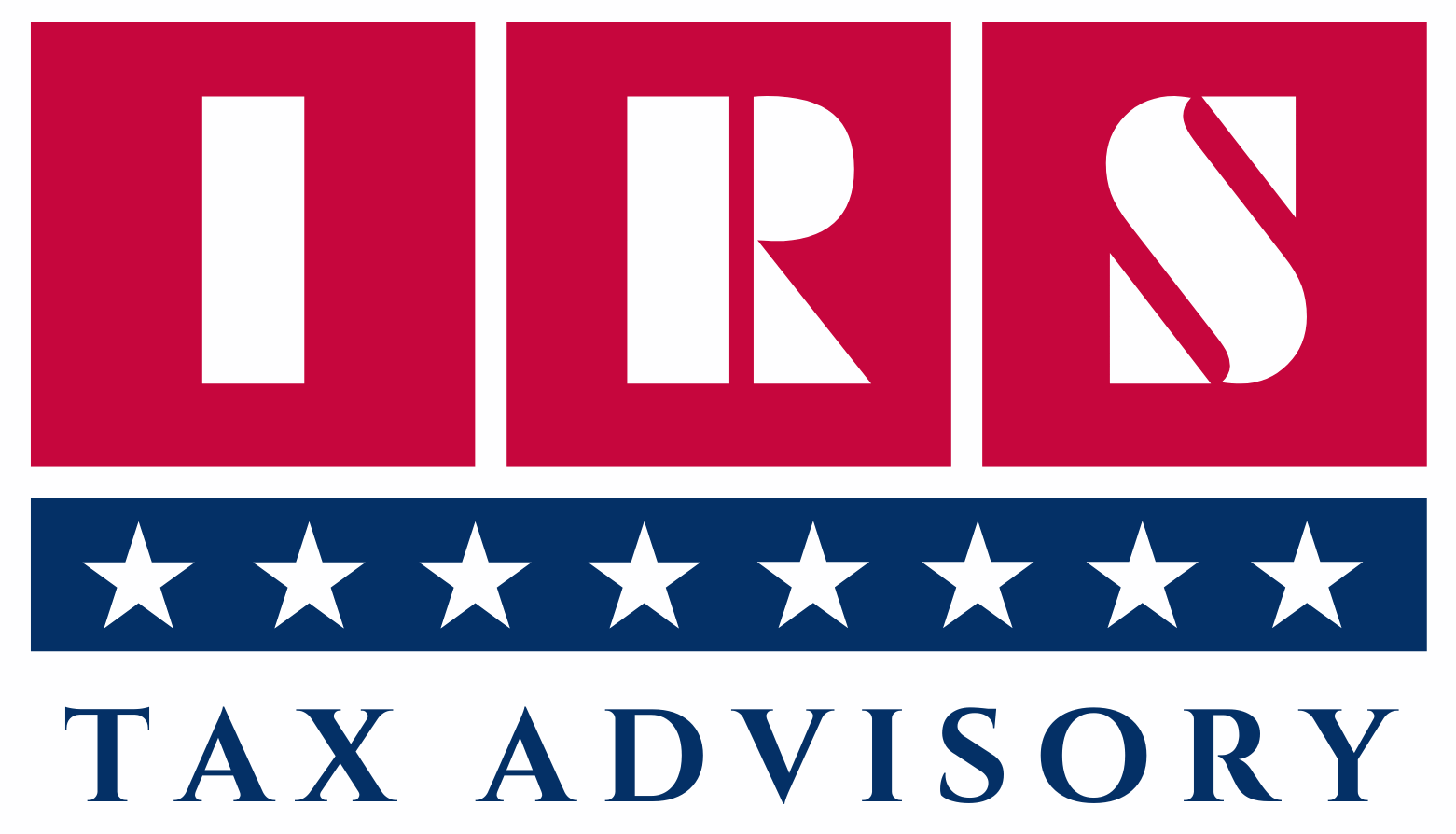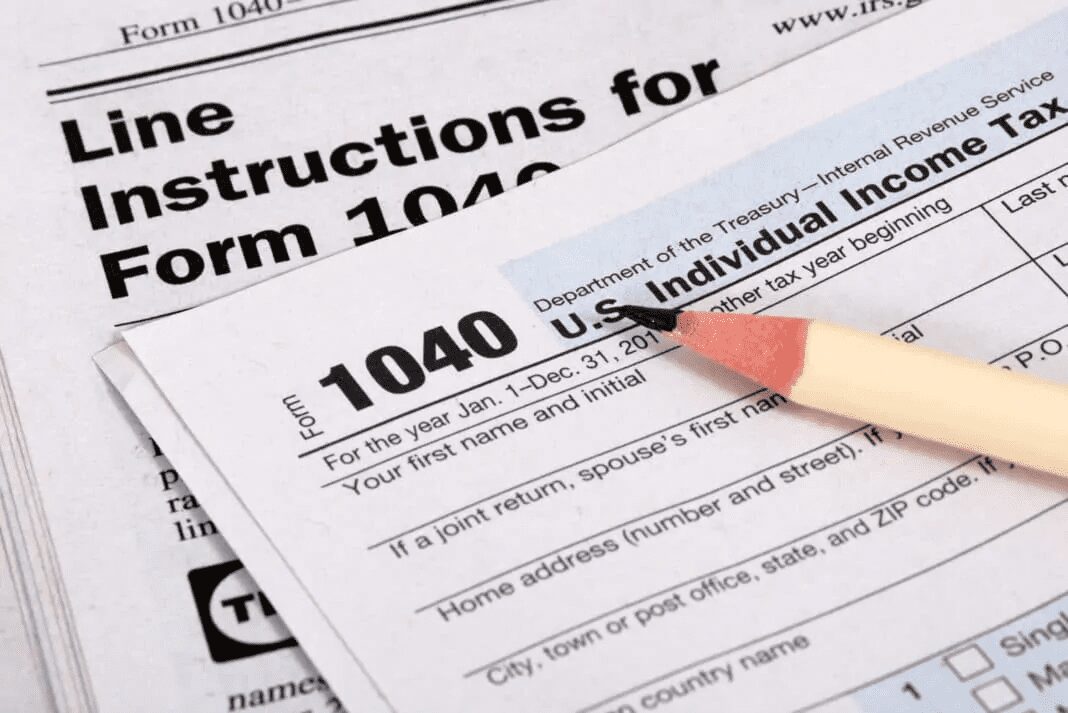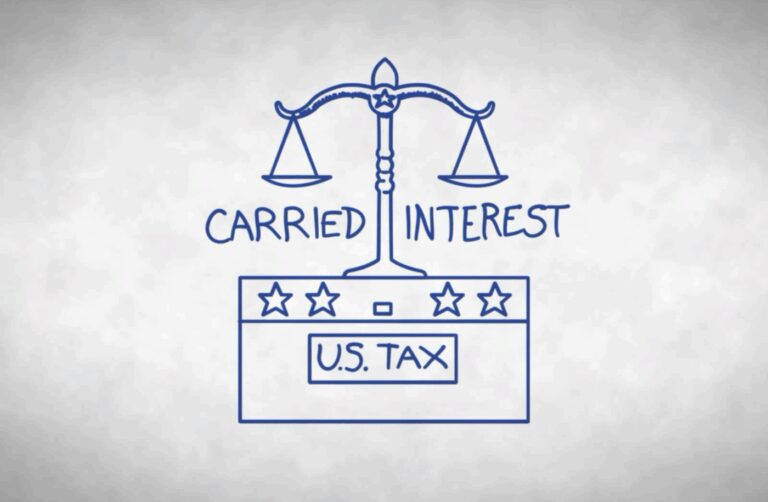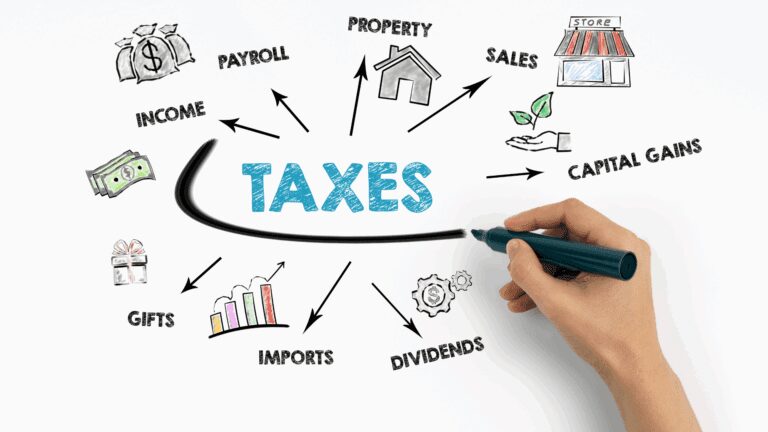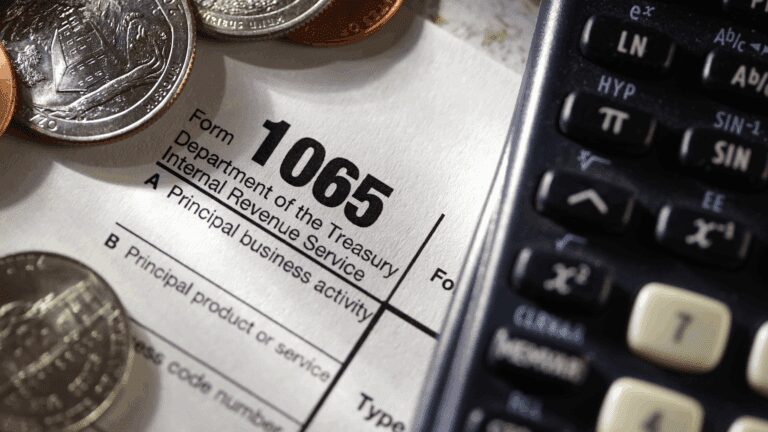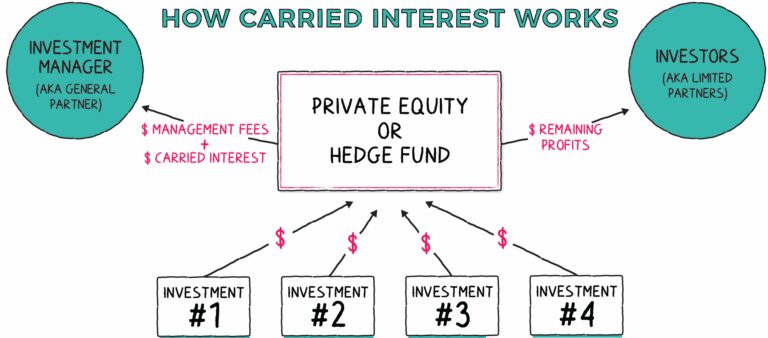Schedule C Form 1040: Best Explained
Table of Contents
Are you looking for the detailed overview on Schedule C Form 1040, then this guide is surely for you. Here we discuss all the aspects from basics to advance. So without any further delay, Let’s begin with an amazing journey.
What is Form 1040?
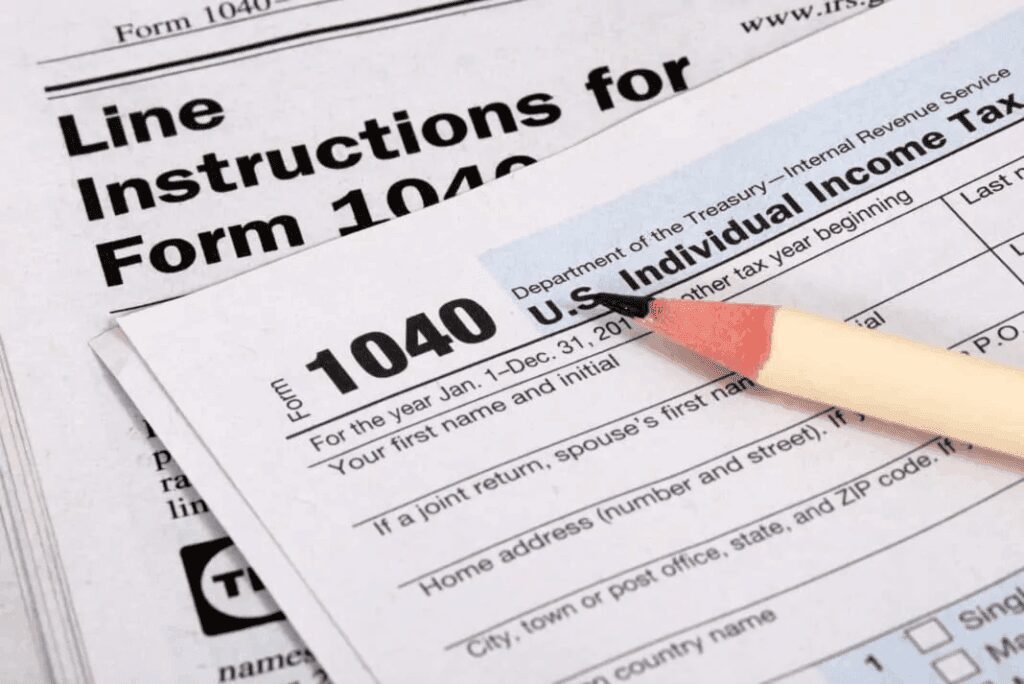
Form 1040, officially known as the U.S. Individual Income Tax Return, is the primary tax form used by individuals to file their annual income tax returns with the Internal Revenue Service (IRS). This form reports income, deductions, credits, and calculates the tax liability or refund for U.S. taxpayers.
Tax Classification of Form 1040
Form 1040 falls under Individual Income Tax Returns and is classified as the standard federal income tax return form for U.S. citizens, residents, and certain non-residents. It is used by individuals who have income from various sources including wages, salaries, interest, dividends, capital gains, self-employment, and more.
Form 1040 can be accompanied by multiple schedules depending on the complexity of the taxpayer’s financial activities. These schedules allow taxpayers to report additional income or deductions and credits.
Form 1040 is the U.S. Individual Income Tax Return form used by taxpayers to file their annual federal income tax with the IRS. It serves as the primary form for reporting individual income, deductions, credits, and tax liabilities.
1. Who Uses Form 1040?
- U.S. citizens and residents who have income to report.
- Individuals with wages, salaries, tips, interest, dividends, capital gains, business income, rental income, retirement distributions, and other income types.
- Taxpayers who claim credits and deductions to reduce taxable income and tax owed.
2. Tax Classification of Form 1040
Form 1040 classifies tax according to the type of income and filing status of the individual taxpayer. The classification essentially breaks down into:
- Filing Status: Determines tax rates and standard deduction. Categories include:
- Single
- Married Filing Jointly
- Married Filing Separately
- Head of Household
- Qualifying Widow(er) with Dependent Child
- Income Types:
- Earned Income (wages, salaries, tips)
- Unearned Income (interest, dividends, capital gains)
- Self-Employment Income (Schedule C or F)
- Retirement Income (pensions, IRAs, Social Security)
- Other Income (rental, unemployment, alimony, etc.)
- Tax Computation:
- Based on progressive tax brackets for ordinary income
- Special rates for long-term capital gains and qualified dividends
- Additional taxes such as self-employment tax, alternative minimum tax (AMT), and net investment income tax (NIIT) may apply
3. Supporting Schedules and Attachments
Form 1040 is the summary page, but actual detailed income and deductions are reported on supplemental schedules, which also classify income and tax types:
- Schedule 1 – Additional Income and Adjustments (e.g., business income, unemployment)
- Schedule 2 – Additional Taxes (e.g., AMT, self-employment tax)
- Schedule 3 – Non-refundable credits
- Schedule A – Itemized deductions (if not taking standard deduction)
- Schedule B – Interest and ordinary dividends
- Schedule C – Profit or loss from business
- Schedule D – Capital gains and losses
- Schedule E – Supplemental income (rental, royalties, partnerships)
- Schedule SE – Self-employment tax
4. Summary
- Form 1040 itself does not represent a single tax type but is the central form that collects and summarizes all taxable income, deductions, credits, and taxes owed by an individual.
- Tax classification on Form 1040 is categorized primarily by:
- Filing status
- Types of income
- Applicable tax brackets and rates
What is Schedule C Form 1040?
Schedule C (Profit or Loss from Business) is a supplemental form filed with Form 1040 by individuals who operate a sole proprietorship or are self-employed. This schedule reports income and expenses related to the taxpayer’s business or profession, ultimately calculating the net profit or loss.
Who Should File Schedule C?
- Sole proprietors (individuals owning an unincorporated business)
- Independent contractors and freelancers
- Self-employed individuals
- Single-member LLC owners treated as disregarded entities
Filing Schedule C is essential for these taxpayers because it allows them to:
- Report business income and expenses separately from personal income
- Claim business deductions, such as supplies, advertising, vehicle expenses, and home office deduction
- Determine net business profit or loss, which affects taxable income and self-employment tax liability
Breakdown of Schedule C Sections
Part I – Income
Report gross receipts or sales, returns and allowances, and calculate gross income from business activities.
Part II – Expenses
List deductible business expenses, such as advertising, car and truck expenses, depreciation, wages, rent, supplies, and utilities.
Part III – Cost of Goods Sold
For businesses that sell products, calculate the cost of goods sold (COGS), including inventory costs.
Part IV – Information on Your Vehicle
Provide details on business use of a vehicle if claiming vehicle expenses.
Part V – Other Expenses
Report any other ordinary and necessary expenses not listed elsewhere.
How to File Form 1040: Step-by-Step Guide
Step 1: Gather Your Documents
Before starting, collect all necessary paperwork, including:
- W-2 forms (wages from employers)
- 1099 forms (interest, dividends, freelance income, etc.)
- 1098 forms (mortgage interest, tuition payments)
- Records of other income (rental, self-employment, unemployment)
- Receipts for deductible expenses
- Social Security Number (SSN) or Individual Taxpayer Identification Number (ITIN)
- Bank account information for direct deposit of refund (optional)
Step 2: Choose Your Filing Method
You can file Form 1040:
- Electronically (e-file): Using tax software (TurboTax, H&R Block, IRS Free File)
- Paper filing: Download and print Form 1040 from IRS.gov, fill out manually, and mail it
Step 3: Fill in Personal Information
- Full name, address, SSN/ITIN
- Filing status: Single, Married Filing Jointly, etc.
- Dependents: List children or others you support, including their SSNs
Step 4: Report Your Income
- Enter wages from W-2 on the designated line
- Report other income (interest, dividends, capital gains) on Schedule 1 if needed, then transfer totals to Form 1040
- Include business/self-employment income on Schedule C
- Report rental, royalty, partnership income on Schedule E
Step 5: Calculate Adjusted Gross Income (AGI)
- Subtract allowable adjustments (educator expenses, student loan interest, IRA contributions, self-employment tax deduction) from total income
- Use Schedule 1 to report adjustments if applicable
Step 6: Choose Standard or Itemized Deductions
- Standard deduction: A fixed amount based on filing status (e.g., $13,850 for single in 2023)
- Itemized deductions: Use Schedule A to deduct expenses like mortgage interest, charitable contributions, state taxes paid, medical expenses if higher than standard deduction
Step 7: Calculate Taxable Income
- Subtract deductions from AGI to get taxable income
Step 8: Calculate Your Tax
Use the IRS tax tables or tax software to find your tax based on taxable income and filing status.
Include additional taxes if applicable:
- Self-employment tax (Schedule SE)
- Net Investment Income Tax (NIIT)
Step 9: Claim Credits
- Enter non-refundable and refundable tax credits (child tax credit, earned income credit, education credits) on Schedule 3
- These credits reduce your tax liability or increase your refund
Step 10: Calculate Total Tax and Payments
- Add taxes owed
- Subtract tax payments already made (withholding from pay checks, estimated tax payments)
Step 11: Determine Refund or Amount Owed
- If payments exceed tax, you get a refund
- If tax exceeds payments, you owe the difference
Step 12: Sign and Date Your Return
- Both spouses must sign if married filing jointly
- Provide phone number and email (optional)
Step 13: Submit Your Return
- E-file for faster processing and direct deposit refunds
- Mail paper return to IRS address for your state (addresses are in Form 1040 instructions)
Step 14: Keep Copies for Your Records
- Save copies of your return and all supporting documents for at least 3 years
Step 15: Track Your Refund
- Use the IRS “Where’s My Refund?” tool online or IRS2Go mobile app
Tax Filing Methods Related to Form 1040 and Schedule C
1. Electronic Filing (e-file)
The IRS strongly encourages taxpayers to file Form 1040 and Schedule C electronically due to:
- Faster processing and refunds
- Confirmation of receipt
- Reduced errors via built-in validations
- Convenience with tax software or authorized tax professionals
Popular tax software such as TurboTax, H&R Block, and TaxAct support filing Form 1040 with Schedule C.
2. Paper Filing
Taxpayers can still file by mailing a printed copy of Form 1040 and Schedule C to the IRS. This method is slower and prone to errors or delays, but some taxpayers prefer it for records or if electronic filing is unavailable.
3. Estimated Tax Payments
Self-employed individuals filing Schedule C are responsible for paying self-employment tax and income tax on their net business income. Because taxes are not typically withheld from self-employment income, taxpayers must make quarterly estimated tax payments using Form 1040-ES to avoid penalties.
Importance of Form 1040 and Schedule C
Understanding Form 1040 and Schedule C is essential for anyone earning income as a sole proprietor, freelancer, or independent contractor. Form 1040 serves as the core U.S. individual income tax return, while Schedule C is specifically used to report business income and expenses.
Together, these forms determine your taxable income and your overall tax liability. Misreporting income or missing deductions on Schedule C can result in overpaying taxes or triggering an IRS audit. Accurately completing these forms ensures that self-employed individuals can maximize legitimate deductions, such as for home office use, travel, supplies, and advertising, while also fulfilling their obligation to report net earnings and calculate self-employment tax.
Understanding these forms empowers taxpayers to make informed financial decisions, maintain IRS compliance, and potentially reduce their tax burden through strategic planning and proper record-keeping.
- Form 1040 is the essential form for filing individual federal income tax.
- Schedule C reports sole proprietorship business income and expenses.
- Proper filing ensures compliance with IRS rules and optimizes tax benefits.
- Electronic filing is the most efficient and accurate method.
- Self-employed taxpayers must manage estimated tax payments to avoid penalties.
Form 1040 Filing Deadline
Regular Due Date:
The regular due date for filing Form 1040 is April 15 following the end of the tax year. This is the official deadline for most U.S. taxpayers to submit their federal individual income tax returns to the IRS. If April 15 falls on a Saturday, Sunday, or a legal holiday, the due date is automatically extended to the next business day.
This ensures that taxpayers have a full working day to comply with the filing requirement. It’s important to note that all taxes owed must also be paid by this date to avoid late payment penalties and interest. Filing on or before the regular due date is essential to remain in good standing with the IRS and to avoid unnecessary financial consequences.
- April 15 of each year (unless it falls on a weekend or holiday)
- For Tax Year 2024, the due date is April 15, 2025
If you live in Maine or Massachusetts, you may have until April 17 due to state holidays like Patriots’ Day.
Extension to File
If you’re unable to file your Form 1040 by the regular due date, which is typically April 15, the IRS allows you to request an automatic six-month extension to submit your return. This extension can be obtained by filing Form 4868, Application for Automatic Extension of Time to File U.S. Individual Income Tax Return, on or before the original due date.
With this extension, the new filing deadline becomes October 15. However, it’s important to understand that this is an extension to file—not to pay. Any taxes owed must still be paid by the April deadline to avoid late payment penalties and interest charges. Filing Form 4868 on time gives taxpayers additional breathing room to organize their finances or gather missing documentation without incurring the more severe penalties associated with late filing.
- You can request a 6-month extension using Form 4868
- Extended deadline: October 15
- IMPORTANT: This is an extension to file, not to pay. Any taxes owed must still be paid by April 15 to avoid penalties.
Penalties for Late Filing and Payment
Failing to file Form 1040 or pay any taxes owed by the due date can result in significant IRS penalties. If you do not file your return on time, the failure-to-file penalty is typically 5% of the unpaid tax for each month or part of a month that the return is late, up to a maximum of 25%. If your return is more than 60 days late, the minimum penalty is the lesser of $485 (for tax year 2024) or 100% of the tax due. In addition,
if you file on time but fail to pay your taxes, the IRS imposes a failure-to-pay penalty of 0.5% per month, also capped at 25% of the unpaid amount. Interest also accrues daily on both the unpaid tax and any penalties, increasing your total liability. Importantly, if both penalties apply in the same month, the IRS reduces the failure-to-file penalty by the failure-to-pay amount, limiting your combined penalty to 5% per month. To minimize penalties, it’s always best to file on time, even if you can’t pay your full tax bill by the deadline.
1. Failure-to-File Penalty
- 5% of unpaid taxes per month (or part of a month) late
- Maximum: 25% of unpaid tax
- If over 60 days late, minimum penalty is $485 or 100% of tax due, whichever is less
2. Failure-to-Pay Penalty
- 0.5% of unpaid taxes per month (or part of a month) late
- Also capped at 25% of unpaid tax
- If both penalties apply in the same month, the failure-to-file penalty is reduced by the failure-to-pay amount (so 4.5% + 0.5%)
3. Interest on Unpaid Taxes
- Accrues daily from the due date until paid in full
- Rate is determined quarterly (e.g., 8% annual rate as of 2024)
Estimated Tax Penalty
Taxpayers who do not have enough tax withheld throughout the year may be subject to an estimated tax penalty. This penalty applies when an individual fails to pay at least 90% of their total tax liability for the year, or 100% of the previous year’s tax liability (110% if their adjusted gross income exceeds $150,000), through withholding and/or quarterly estimated tax payments.
The IRS expects taxes to be paid as income is earned, typically through pay check withholding or quarterly estimated payments for self-employed individuals, investors, or others with untaxed income. If these payments are late or insufficient, the IRS may charge a penalty based on the amount underpaid and the length of the underpayment period.
The penalty is calculated using Form 2210, and it accrues interest based on the IRS-set interest rate, which may change quarterly. While this penalty is not usually severe, it can be avoided by making timely estimated payments or increasing withholding amounts to meet the safe harbour thresholds.
If you didn’t withhold enough tax or make sufficient estimated tax payments during the year, you may owe a penalty.
- Use Form 2210 to calculate and report the penalty (or let the IRS compute it)
- Required if:
- You expect to owe $1,000 or more
- You didn’t pay at least 90% of current year’s tax or 100% of prior year’s tax (110% if AGI > $150,000)
How to Avoid Penalties
Avoiding IRS penalties begins with filing your tax return on time, even if you’re unable to pay the full amount owed. Submitting Form 1040 by the due date—typically April 15—helps you avoid the steep failure-to-file penalty, which can quickly accumulate. If you need more time to prepare your return, filing Form 4868 grants a six-month extension, but it’s essential to estimate and pay any tax due by April 15 to avoid the failure-to-pay penalty and interest. To steer clear of estimated tax penalties, ensure that your tax withholding or quarterly estimated payments are sufficient throughout the year.
This means paying at least 90% of your current year’s tax liability or 100% of last year’s tax (110% for high-income earners). If you’re unable to pay your full balance, the IRS offers payment plans and instalment agreements to help reduce penalties and manage your tax debt. Keeping accurate records, using reliable tax software, or consulting a tax professional can also reduce the risk of errors that may trigger penalties.
- File on time, even if you can’t pay (use Form 4868 if needed)
- Pay as much as you can by April 15
- Use IRS payment plans or instalment agreements if needed
- Set up withholding or estimated payments to cover tax liability during the year
Frequently Asked Questions (FAQ)
What is Form 1040?
Form 1040 is the standard IRS form that individuals use to file their federal income tax returns. It summarizes your income, deductions, credits, and calculates your tax liability or refund.
Who needs to file Form 1040?
Almost all U.S. citizens and resident aliens who earn income above a certain threshold must file Form 1040. This includes wage earners, self-employed individuals, and those with investment or rental income.
What is Schedule C and why is it important?
Schedule C (Profit or Loss from Business) is a form attached to Form 1040 that self-employed individuals and sole proprietors use to report income and expenses related to their business or freelance work.
Do I need to file Schedule C if I have a side hustle?
Yes! If you earn money from self-employment, freelancing, or a side gig, you must report your income and expenses on Schedule C.
Can I deduct business expenses on Schedule C?
Absolutely! Schedule C allows you to deduct ordinary and necessary business expenses like supplies, travel, home office, and marketing costs to lower your taxable income.
What kinds of income go on Schedule C?
All income from your sole proprietorship or self-employment activities, including freelance payments, sales revenue, and service fees, must be reported on Schedule C.
Is Schedule C required if I operate an LLC?
If you are a single-member LLC, yes — your income and expenses are typically reported on Schedule C attached to your personal Form 1040.
How does Schedule C affect my taxes?
Schedule C determines your net business profit or loss, which is then included on your Form 1040. Your net profit is subject to income tax and self-employment tax.
What is the deadline for filing Form 1040 and Schedule C?
Both are due by April 15 each year (or the next business day if it falls on a weekend/holiday). Extensions are available if you file Form 4868.
What if I owe self-employment tax?
Self-employment tax covers Social Security and Medicare taxes for self-employed individuals and is calculated on your Schedule SE, based on Schedule C net income.
Can I file Form 1040 and Schedule C electronically?
Yes! Most tax software supports electronic filing for Form 1040 and Schedule C, making filing faster and easier.
What records should I keep for Schedule C?
Maintain detailed records of income, receipts for expenses, mileage logs, invoices, and bank statements to support your Schedule C entries in case of IRS review.
